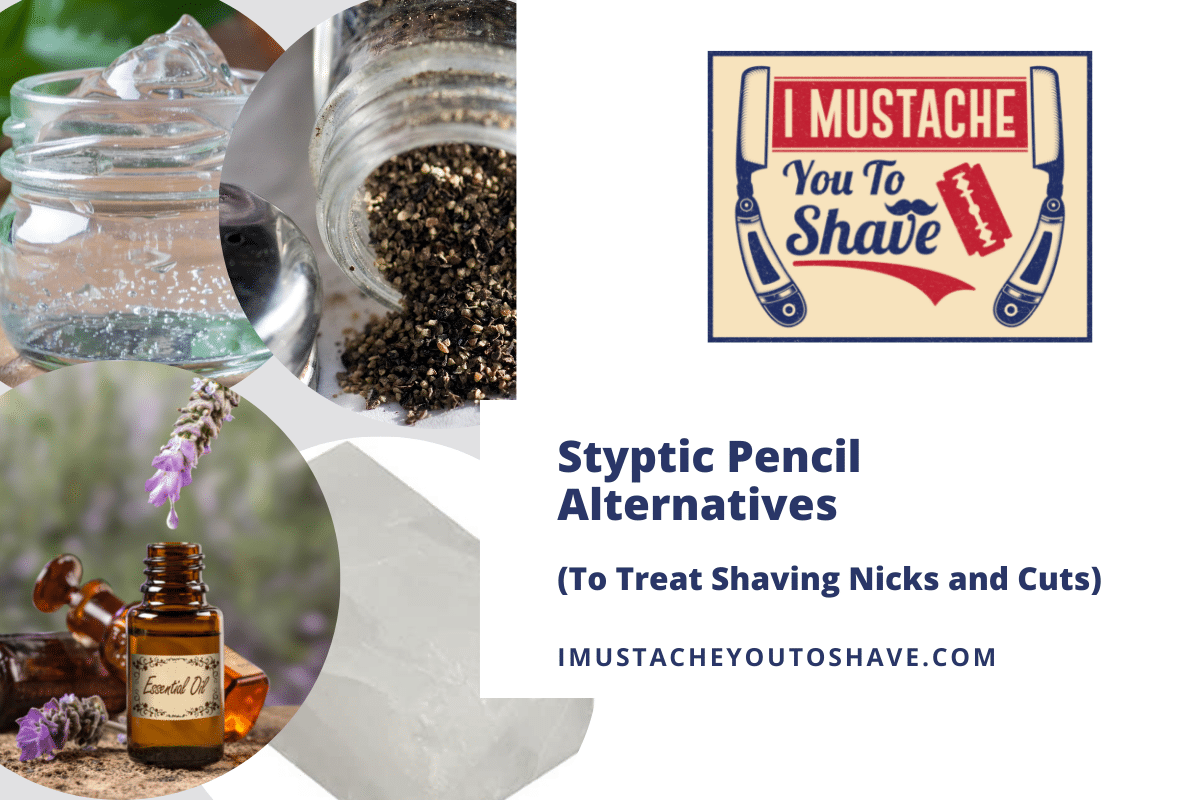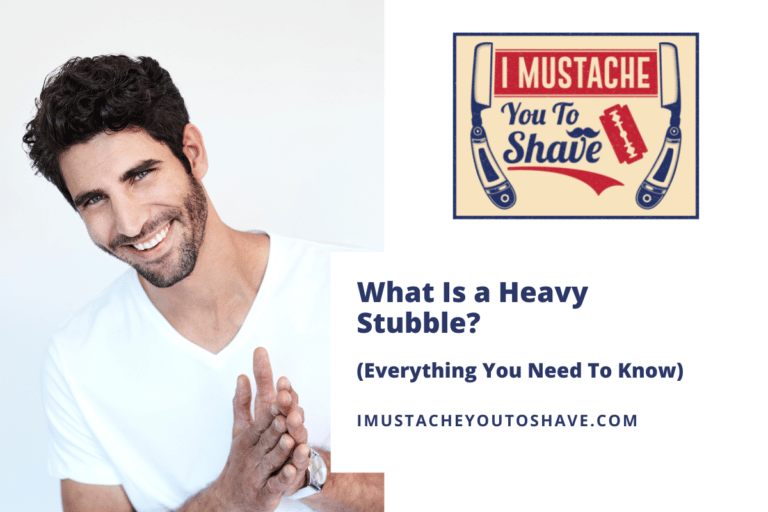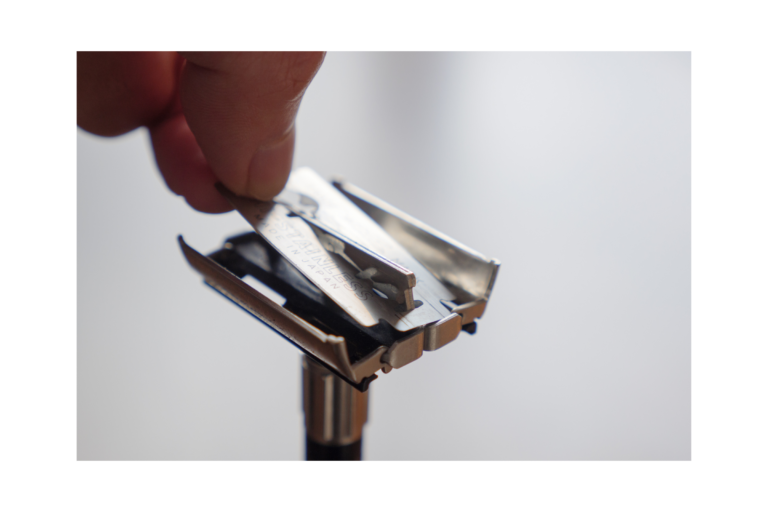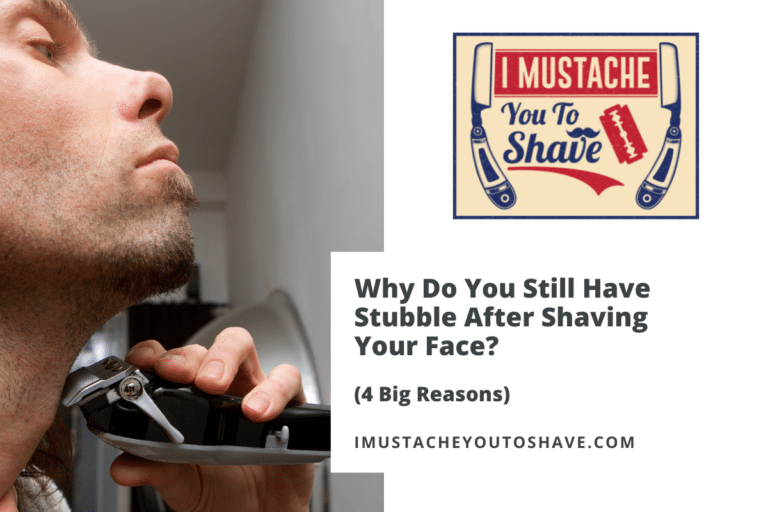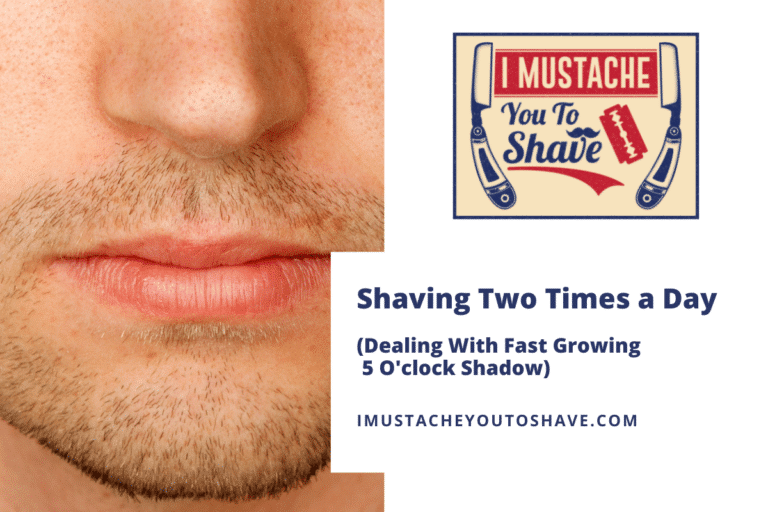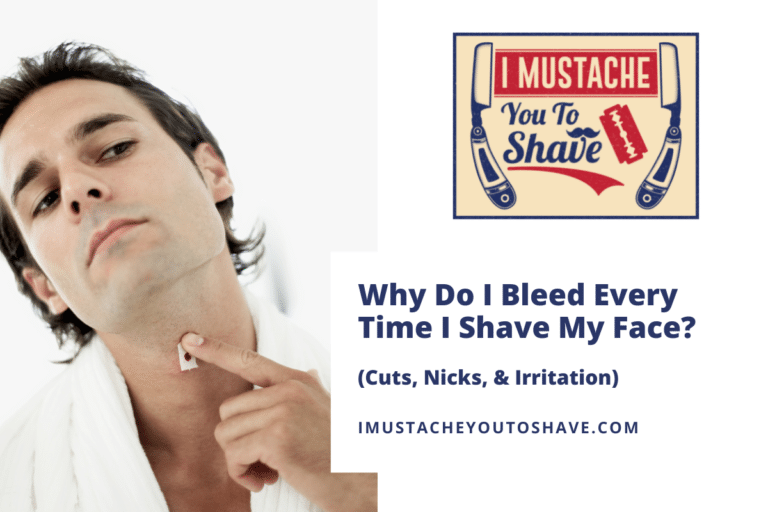Styptic Pencil Alternatives (To Treat Shaving Nicks and Cuts)
We’ve all had it happen. You’re in a rush, you overslept, you’re not paying attention – and there you have it: a shaving nick. You have your styptic pencil, but the truth is you just can’t seem to get used to the way it feels. What else can you use?
If you do not have a styptic pencil on hand (or prefer not to use one), there are several alternatives. To stop shaving nicks or cuts from bleeding, you can use an alum block, Proraso Nick Sealer, or if you prefer, a more natural route with lavender essential oil, aloe vera, or even black pepper from your kitchen.
Keep reading to learn more about styptic pencils and what you can use in their place.
What is a styptic pencil?
Commonly used before multi-blade razors became popular, the styptic pencil is still an item used by many, primarily those who choose to go the straight razor route.
A styptic pencil is a small and handy shaving tool used when you get a nick or cut. It comes in the form of a stick or tube, similar to lipstick or chapstick. Made of aluminum salts (often aluminum sulfate) and a waxy binder, its firm texture allows it to maintain this shape while also gliding onto the skin and stopping the bleeding.
Much more than a simple barrier, the ingredients in a styptic pencil actively change the way your body is responding to the wound. This is the reason why they and their similar alternatives are so helpful in streamlining the process of shaving.
You can certainly rest assured that styptic pencils are by far not the only shaving cut treatment in town. So before you’re tempted to go last resort and reach for toilet paper to stop your pesky nick from bleeding, let’s take a look at some alternatives.
How do styptic pencils treat nicks and cuts after shaving?
You can think of a styptic stick as a first responder to the scene of an emergency (your face). They are there to readily assess the damage and prevent it from getting any worse.
Styptic pencils pack a 1-2 punch for pesky nicks and cuts you might get while shaving. They quickly stop a wound from bleeding, and they create a seal that closes off the wound, preventing it from bacteria exposure and potential infection.
For lack of a better comparison, the styptic stick works similar to a scab. When the aluminum substance comes into contact with blood, it works by expanding the proteins in the blood. This causes the blood to coagulate or clot, halting blood flow from the wound and creating a protective hard surface.
The best styptic pencil alternatives
Despite being easy to use and carry around, the styptic pencil might not be for everyone. Fortunately, the shaving product market is a vast landscape of seemingly endless product types and possibilities.
When it comes to your shaving regime, it’s definitely always good to know that you have options in terms of the products you choose. That’s what’s great about a product like the styptic pencil. Do you like its style, but not its ingredients? Its harshness? Its residue?
There are tons of products in existence that work effectively to stop shaving nicks and cuts from bleeding and seal them up. Some of these share active ingredients with styptic pencils, while others do not, and simply have naturally occurring properties that function in the same way.
Here are the best alternatives to styptic pencils:
- Alum block
- Proraso nick sealer
- Ground black pepper
- Lavender essential oil/Aloe vera gel
Using the examples provided here, you can take a look and try to figure out why you think you might be seeking out an alternative to a styptic pencil. The nature of that cause should point you in the right direction. Hopefully “the right direction” isn’t you emptying a shaker full of pepper on your face, but hey, whatever works!
Alum block
Sometimes, looking back to the past can be the answer to our problems. If you take issue with your styptic pencils and how they function, you might be one of many who benefit from going back to a product from days of yore: the alum block.
An alum block is a block of aluminum potassium sulfate that’s been used for centuries as an astringent, antiseptic, and coagulant to help with the nicks and cuts that come with shaving. Though not sting-free, an alum block is notably less harsh than styptic pencils. Think of it as a light detergent versus a styptic pencil’s bleach spot treatment.
A basic change of pace from the styptic pencil, an alum block will perform all the same tasks without quite as much bite. Since you can use it all over your face, it can provide additional support in targeting acne and can also serve as a protective layer to keep your nicks safe from aftershave.
Give it a try if you’re looking for something with more all-over effectiveness.
Proraso Nick Sealer
A well-known, well-respected brand of all products shaving-related, Proraso pulls through once again with this product. Their Nick Sealer does all the work a styptic pencil does, but with some added benefits as well.
The main active ingredient in Proraso Nick Sealer is aluminum chlorohydrate, essentially the same as a styptic pencil might contain, which quickly stops the flow of blood from the cut. However, this is where the similarities end. The smooth gel doesn’t come with the potential pain, irritation, or residual soreness that is sometimes associated with styptic pencils. In addition to this, it dries clear, not leaving any residue like a pencil might.
Do you like your styptic pencil for its ingredients, but find it lacks in other areas? If your main gripe is with the way it handles and affects your skin and nicks, give this gel-based type a try. Proraso Nick Sealer might be the tweak you need in your regimen to help stop a wayward nick with ease and without pain.
Ground black pepper
It might sound strange, but in a pinch, the solution to help with a bleeding shaving nick might be in your spice cabinet. That’s right, as many chefs (who tend to have the product within arm’s reach) agree, ground black pepper is quite useful to help stop a fresh wound from continuing to bleed.
A natural coagulant, black pepper does the same thing that styptic pencils do. Its active ingredient serves to put a stop to the blood flow. In addition, black pepper also serves as an antibacterial, helping to keep your cut clean, as well. Pepper is also not supposed to cause any burning sensation or pain when applied to a wound.
Maybe it seems a little strange to keep a pepper shaker with your toiletries. The benefits are pretty remarkable, however. A sting-free, all-natural alternative to styptic pencils, it might be a good idea to keep this alternative in your back pocket for cuts and nicks of any kind, in addition to shaving!
Lavender essential oil/Aloe Vera
Another all-natural approach, lavender essential oil, and aloe vera are two great plant-based remedies to help tackle shaving wounds. Free of the chemicals in styptic pencils that raise health concerns for some, these are yet another example of how endlessly helpful nature can be if we take the time to do a little research first!
Both astringent and antimicrobial, lavender and aloe vera act to keep your wound stopped up and free from infection. Astringents cause the tissue they come in contact with to contract, helping to stop the flow of blood. Antimicrobials help fight off infection simultaneously.
As a quick side note: lavender oil can be a bit strong. If you have sensitive skin, consider diluting it in grapeseed or jojoba oil to avoid potential irritation. Do this, or use the ever-mild aloe vera gel, and you’ll be taking care of your wound and giving your skin some natural nourishment, too!

